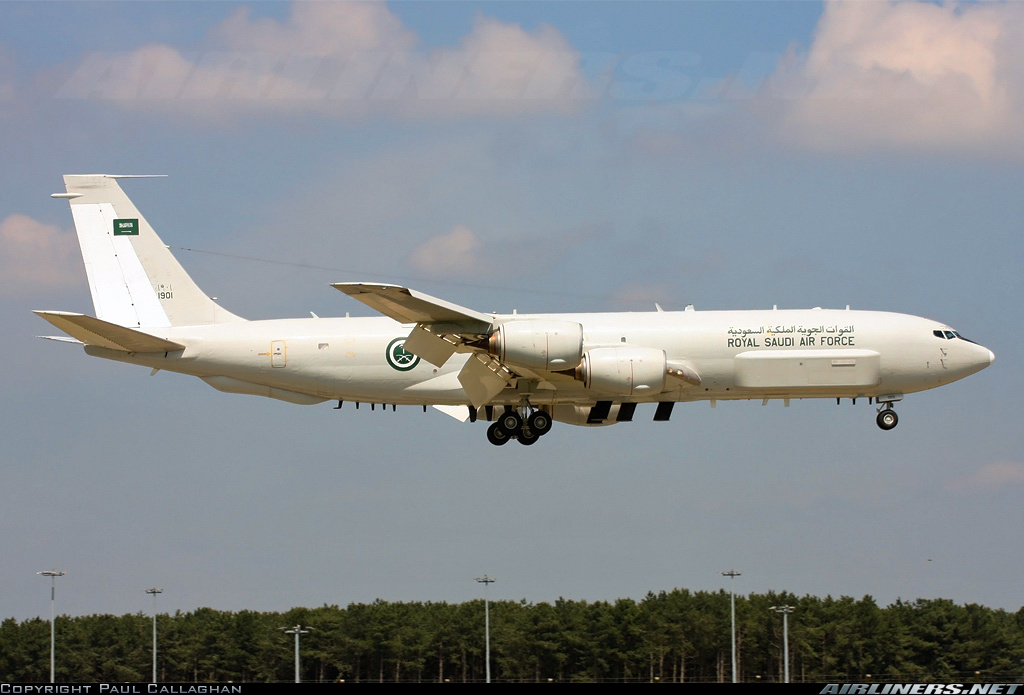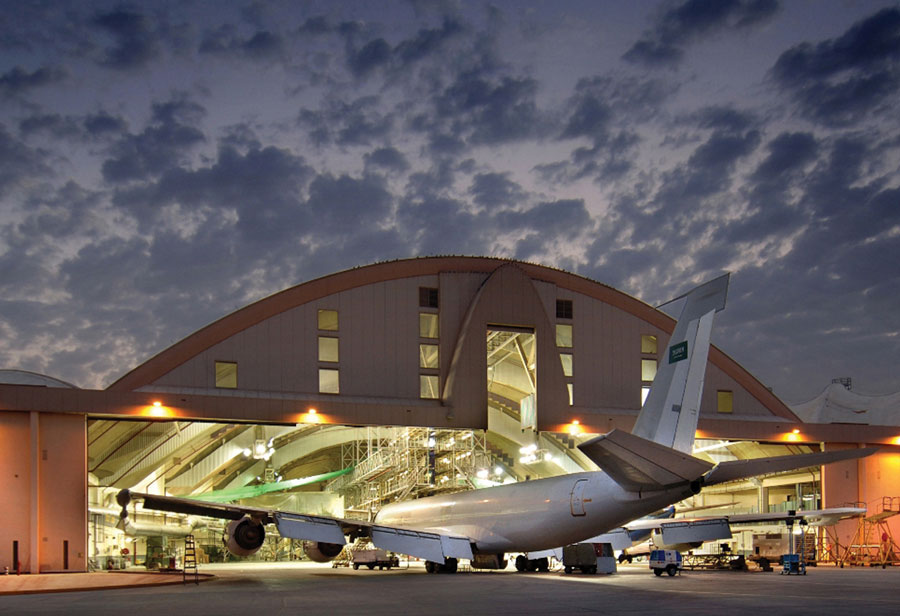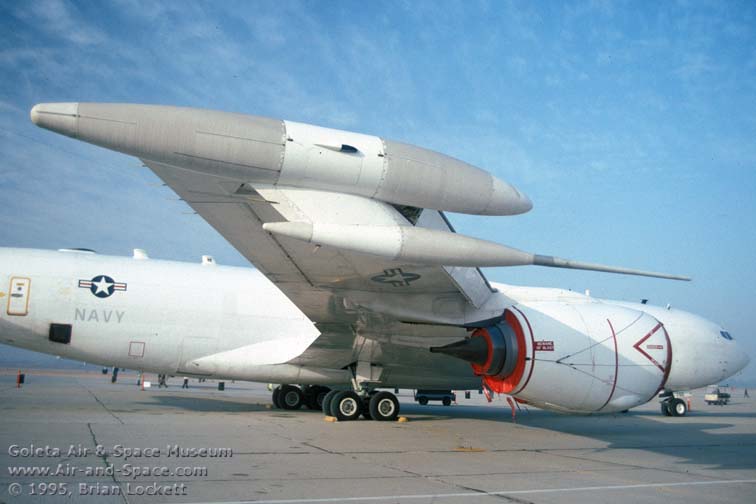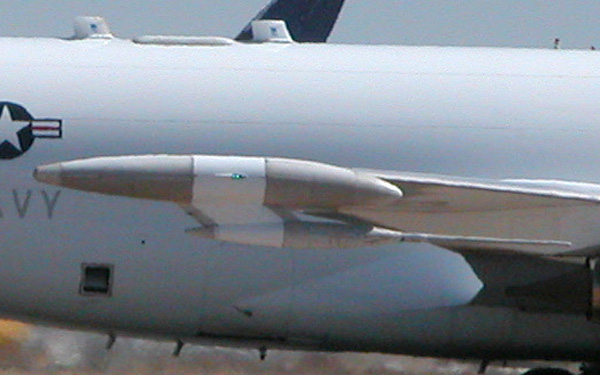تثبيت التطبيق
How to install the app on iOS
Follow along with the video below to see how to install our site as a web app on your home screen.
ملاحظة: This feature may not be available in some browsers.
أنت تستخدم أحد المتصفحات القديمة. قد لا يتم عرض هذا الموقع أو المواقع الأخرى بشكل صحيح.
يجب عليك ترقية متصفحك أو استخدام أحد المتصفحات البديلة.
يجب عليك ترقية متصفحك أو استخدام أحد المتصفحات البديلة.
طـائـرة الاسـتـخـبـارات RC-135W
- بادئ الموضوع فادي الشام
- تاريخ البدء
اولا نقول لك الحمد لله على السلامه وحياك الله اخي العزيز فادي الشام وعودا حميدا وانت كنز لهذا المنتدى الشامخ
والحقيقه اتحفتنا بمعلومات جديده عن هذه الطائرة التي اول مره اسمع عنها ولكن اليست قريبه من طائرات الاستخبار السعوديه او ماتسمى منظومة الحرب الالكترونيه والتي المعلومات عنها شحيحه فاياليت اذا كان لديكم معلومات توردها هنا شاكرا لك ...
والحقيقه اتحفتنا بمعلومات جديده عن هذه الطائرة التي اول مره اسمع عنها ولكن اليست قريبه من طائرات الاستخبار السعوديه او ماتسمى منظومة الحرب الالكترونيه والتي المعلومات عنها شحيحه فاياليت اذا كان لديكم معلومات توردها هنا شاكرا لك ...
بما أن طائرة RE-3A/B تعتبر إشتقاق للطائرة RC-135 Rivet Joint, فلا تتوقع معرفة معلومات عن الطائرة.
* مدى الطائرة RE-3A/B حوالي 11,000 كم.
* يجري الآن تحديثها بشكل كامل, وإضافة أنظمة حماية.
* الدول الوحيدة التي تملك قدرات مماثلة للطائرة RC-135 Rivet Joint في المنطقة هي :
دولة إسرائيل, العربية السعودية والقوات البريطانية والأميركية المتواجدة بالمنطقة.
* طائرة مثل RE-3A/B بقدراتها المتطورة أثارت تساؤلات حول نية العربية السعودية من إمتلاك منصة كهذه.
* بحسب أحد المصادر, يقال بأن أحد الأسباب هو مراقبة الدول العربية وإيران.
عملها مشابه ل الاواكس
ماسبب كرم الولايات الامريكيه مع بريطانيا توماهوك وهذي الطائره
مع ان هناك دول قريبه ل امريكيا مثل فرنسا وغيرها
عملها مشابه ل الاواكس
ماسبب كرم الولايات الامريكيه مع بريطانيا توماهوك وهذي الطائره
مع ان هناك دول قريبه ل امريكيا مثل فرنسا وغيرها
تختلف عن الـAWACS ..
RC-135 أو حتى RE-3 A/B مهمتهم الاستخبار الالكتروني بحيث يتم رصد موجات الرادار والراديو والتجسس عليها وتحليلها ..
هذه العملية تسهل عملية التشويش وترصد التحركات في المنطقة .. بالاضافة الى احتوائها رادار فتحة صناعية ..
لرسم الخرائط وتحديد الاهداف الارضية ..
بعض الطائرات من الـRC-135 تحتوي قدرات تشويش ايضاً .. ماعرف اذا الـRE-3 عندها قدرات على التشويش أو لا ...
عملها مشابه ل الاواكس
ماسبب كرم الولايات الامريكيه مع بريطانيا توماهوك وهذي الطائره
مع ان هناك دول قريبه ل امريكيا مثل فرنسا وغيرها
المملكة المتحدة هي أكثر الحلفاء قرباً للولايات المتحدة الأميركية.
* البحرية الملكية RN هي الدولة الوحيدة التي تمتلك صواريخ UGM-133 Trident II بعد الولايات المتحدة الأميركية.
* تعمل صواريخ UGM-133 Trident II على غواصات Vanguard التابعة للبحرية الملكية RN.
أتوقع أنها شاركت بفعالية في عاصفة الحزمبما أن طائرة RE-3A/B تعتبر إشتقاق للطائرة RC-135 Rivet Joint, فلا تتوقع معرفة معلومات عن الطائرة.
* مدى الطائرة RE-3A/B حوالي 11,000 كم.
* يجري الآن تحديثها بشكل كامل, وإضافة أنظمة حماية.
* الدول الوحيدة التي تملك قدرات مماثلة للطائرة RC-135 Rivet Joint في المنطقة هي :
دولة إسرائيل, العربية السعودية والقوات البريطانية والأميركية المتواجدة بالمنطقة.
* طائرة مثل RE-3A/B بقدراتها المتطورة أثارت تساؤلات حول نية العربية السعودية من إمتلاك منصة كهذه.
* بحسب أحد المصادر, يقال بأن أحد الأسباب هو مراقبة الدول العربية وإيران.
في الخرج؟مشاهدة المرفق 63969 تم تركيب انف الذئب بدل الخنزير
للنسخه السعوديه
القوات الجوية الملكية السعودية لديها نسخة مشتقة من RC-135
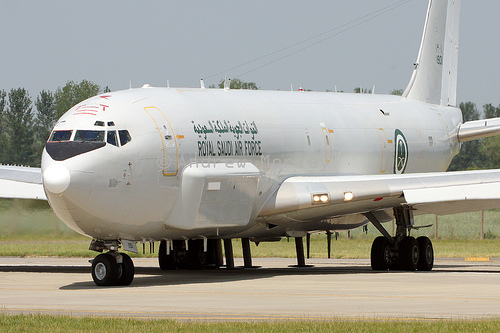
وتخضع لبرامج تحديث
بما أن طائرة RE-3A/B تعتبر إشتقاق للطائرة RC-135 Rivet Joint, فلا تتوقع معرفة معلومات عن الطائرة.
* مدى الطائرة RE-3A/B حوالي 11,000 كم.
* يجري الآن تحديثها بشكل كامل, وإضافة أنظمة حماية.
* الدول الوحيدة التي تملك قدرات مماثلة للطائرة RC-135 Rivet Joint في المنطقة هي :
دولة إسرائيل, العربية السعودية والقوات البريطانية والأميركية المتواجدة بالمنطقة.
* طائرة مثل RE-3A/B بقدراتها المتطورة أثارت تساؤلات حول نية العربية السعودية من إمتلاك منصة كهذه.
* بحسب أحد المصادر, يقال بأن أحد الأسباب هو مراقبة الدول العربية وإيران.
تختلف عن الـAWACS ..
RC-135 أو حتى RE-3 A/B مهمتهم الاستخبار الالكتروني بحيث يتم رصد موجات الرادار والراديو والتجسس عليها وتحليلها ..
هذه العملية تسهل عملية التشويش وترصد التحركات في المنطقة .. بالاضافة الى احتوائها رادار فتحة صناعية ..
لرسم الخرائط وتحديد الاهداف الارضية ..
بعض الطائرات من الـRC-135 تحتوي قدرات تشويش ايضاً .. ماعرف اذا الـRE-3 عندها قدرات على التشويش أو لا ...
الله يعطيكم العافية
للامانة اول مره اعلم اننا نملك طائرة حرب إلكترونيه بهذي المواصفات الجباره ، القوات الجوية الملكية السعودية كعبها عالي في المنطقة ومصدر فخر عظيم لنا ..
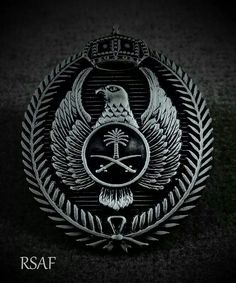
للامانة اول مره اعلم اننا نملك طائرة حرب إلكترونيه بهذي المواصفات الجباره ، القوات الجوية الملكية السعودية كعبها عالي في المنطقة ومصدر فخر عظيم لنا ..

كيف تعمل حتى تتمكن من رصد الأفراد؟ ؟
هل يمكنها من تمييز الأفراد على الأرض ؟؟!!!!
هل يمكنها من تمييز الأفراد على الأرض ؟؟!!!!
سلمت يمينك مواضيعك دايما مميزه ..
كل عام وانت بخير
كل عام وانت بخير
الامريكان .. كلعاده في عالم اخر
الامريكان .. كلعاده في عالم اخر
وحلفائها المقربيين ايضا
الله يسلمك و كل سنة و انت طيبسلمت يمينك مواضيعك دايما مميزه ..
كل عام وانت بخير
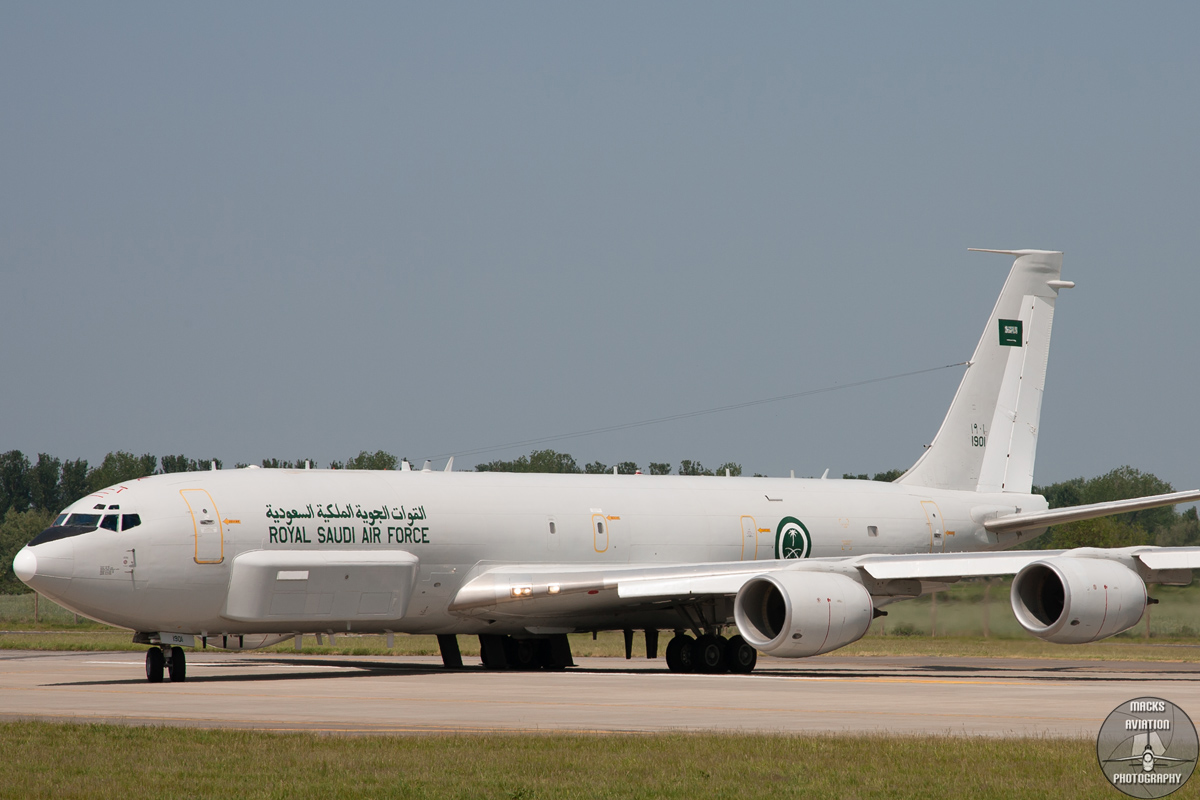
The al Quwwat al Jawwiya al Malakiya as Sa'udiya (Royal Saudi Air Force - RSAF) is known to operate a pair of E-3/E-8B-based SIGINT platforms that are designated as the RE-3A (RSAF serial number 1901) and the RE-3B (RSAF serial number 1902). Of the two, aircraft 1901 was previously the KE-3A in-flight refuelling tanker RSAF serial 1817 and is understood to have been modified for the SIGINT role by legacy US contractor E-Systems, with the necessary modification work being reported to have begun during August 1998. While not confirmed, it is thought likely that the programme involved E-Systems in the "engineering, development, fabrication and installation" of the necessary mission equipment, together with the provision of an associated ground station; an initial spares holding; classroom and "on-aircraft" training services and "overseas system support". Aircraft 1817's conversion to RE-3A standard is understood to have been completed during September 2000 and as such, it was re-numbered as 1901 and externally characterised by antenna cheek fairings on both sides of its forward fuselage; a multi-element, Multiple Communications Emitter Location System (MUCELS) - type array below its centre fuselage; a multi-element blade aerial farm below its rear fuselage; Infra-Red (IR) countermeasures sources built into the rear sections of its engine pylons; a dorsal array that included a wire aerial and at least seven blade antennas and the installation of CFM-56 turbofan engines (see following). Subsequent to its conversion, aircraft 1901 is reported to have been returned to the US (presumably for maintenance and/or upgrade) during December 2001 and to have been re-delivered to the RSAF on 9 January 2004 (see following).
Aircraft 1901's external appearance is very similar to that of the US Air Force's (USAF) RC-135V/W 'Rivet Joint' SIGINT system and subsequent to its initial supply, Saudi Arabia has gone on to acquire the RE-3B aircraft RSAF serial number 1902. Here, the US Defense Security Co-operation Agency (DSCA) announced on 5 September 1996 that it had notified the US Congress of Saudi Arabia's desire to purchase services related to "the design, development, integration [and] ground and flight testing of [the] hardware and software for a Tactical Airborne Surveillance System (TASS)" that would be installed aboard an "RSAF E-6 aircraft". The contractor on the programme (which was valued at then year USD350 million) was to be legacy contractor E-Systems and the deal also covered conversion of Saudi Arabia's existing RE-3A to TASS standard during its 1999 Programmed Depot Maintenance (PDM) cycle. Future PDM for both the TASS configured RE-3A and the new "E-6" platform was to be carried out in the US and the DSCA's justification for the sale included the enhancement and strengthening of Saudi Arabia's "defensive capability"; the lack of difficulty the Saudis would have in absorbing the equipment into their armed forces; increased interoperability with US forces in the region and its lack of effect on "US defense readiness" and the regional "basic military balance". IHS Jane's sources suggest that the described programme has resulted in the RE-3B platform which was converted from the YE-8B Joint Surveillance Target Attack Radar System (Joint STARS) aircraft that bore the USAF serial number 88-0322 and had been in storage at the USAF's 309th Aerospace Maintenance and Regeneration Group at Davis-Monthan Air Force Base in Arizona (32° 9' 5.35" N; 110° 49' 44.68" W) since 1991. Use of the YE-8B airframe probably explains the DSCA's use of the term "E-6" in the RE-3B context as the E-8B aircraft was based on the Boeing E-6 airframe rather than that of the company's E-3 platform. As with the RE-3A, modification of the YE-8B to RE-3B configuration is understood to have been undertaken by legacy contractor E-Systems (and its successor L-3 Communications Integrated Systems) and the platform may also be known as the Improved TASS (ITASS) architecture. Most recently, IHS Jane's analysis suggests that the RE-3A and B aircraft (alongside a pair of King Air 350 surveillance platforms) are assigned to the RSAF's No 19 Squadron and are based at Prince Sultan Air Base in central Saudi Arabia (24° 3' 42.36" N; 47° 24' 49.59" E).
Looking at possible platform upgrades, 5 August 2009 saw the DSCA notify the US Congress of the proposed sale of 10 AN/ARC-230 High Frequency (HF - 3 to 30 MHz) secure voice/data systems; 25 AN/ARC-210(V) or AN/ARC-231 Very/Ultra High Frequency (V/UHF - 30 MHz to 3 GHz) secure voice/data systems; four Multifunction Information Distribution System Low Volume Terminals (MIDS LVT); four LN-100GT inertial reference units, 25 SY-100, seven SG-250 and six SG-50 (or their functional equivalents) cryptographic systems and 10 CYZ-10 fill devices for installation aboard Saudi Arabian TASS aircraft together with an associated system ground station modification package; a TASS equipment trainer; a mission scenario simulator; maintenance test, test and support equipment; a spares and repair parts holding; a personnel training package (including training equipment); publications and technical documentation (including flight, operator and maintenance manuals); a facilities construction/modification package; US Government/contractor engineering and support services and "other related elements of logistics support". At the time of the announcement, the proposed sale was estimated to have a value of then year USD530 million and was reported as enabling the "[RSAF] to sustain [its] current [TASS] capability, maintain interoperability with USAF and other coalition forces and provide flexibility options for future growth". Again, the package would enhance the service's ability "to use a common architecture [to] efficiently [communicate] gathered electronic data within the RSAF and with other regional coalition forces". The proposed sale was held "not to alter the basic military balance in the region" and if consummated, would employ L-3 Communication Integrated Systems' Greenville, Texas business unit as its "principle contractor".
A day later (6 August 2009), the DSCA issued a second Congressional notification of the possible sale of a Communication and Navigation Surveillance/Air Traffic Management (CNS/ATM) upgrade package for installation aboard 13 Saudi E-3A Airborne Warning and Control System (AWACS), KE-3 tanker and RE-3 SIGINT aircraft. Valued at then year USD1.5 billion, the proposed effort was to be executed in two phases, with Phase 1 including the provision of integrated Global Positioning System/inertial navigation systems; Very High Frequency (VHF - 30 to 300 MHz) radios (with 8.33 kHz channel spacing); traffic collision avoidance systems; Mode S transponders; Modes 4/5 identification friend-or-foe encryption; replacement HF radios; Link 16 multifunction information display systems; 'Have Quick II' secure radios; satellite communications and common secure voice encryption (see previously). Under Phase 2 of the proposed schemata, the described aircraft would receive digital flight instrumentation and displays; flight director systems/autopilots, flight management systems; cockpit data line messaging and combat situational awareness displays together with an associated spares and repair parts holding; support and test equipment; publications and technical documentation; personnel training; training, personnel support and test equipment (including flight simulators); US Government/contractor engineering support; technical and logistic support services and "other related elements of logistical and programme support". At the time of the announcement (and if the deal was consummated), a US prime contractor was to be chosen after a "competitive source selection". Subsequent to these August 2009 DSCA notifications, RE-3A aircraft 1901 was logged as having made a two day stop-over at Royal Air Force (RAF) Mildenhall (Suffolk, England - 52° 21' 49.66" N; 0° 29' 4.87" E) on its way to the US for "re-work". During this 2 to 4 June 2010 event, aircraft 1901 exhibited an external configuration that included
a ventral antenna array that (from nose to tail) comprised a group of three blade aerials aft of the aircraft's nosewheel bay, a group of five blades beneath its forward fuselage, a group of four MUCELS-type antennas and an associated arrangement of four blades (aft of the MUCELS array) beneath its centre section, a group of one hook-shaped and five blade aerials beneath its rear fuselage and a faired-over refuelling boom housing
a dorsal antenna array that included at least five blade aerials, two wire aerials, a forward-facing fin tip HF probe antenna and a rear-facing fin-tip equipment fairing
rear-facing IR jamming sources attached to each of the aircraft's engine pylons
port and starboard cheek antenna fairings that both exhibit an arrangement of four panels and a horizontal triangular-shaped feature on their outer faces

The al Quwwat al Jawwiya al Malakiya as Sa'udiya (Royal Saudi Air Force - RSAF) is known to operate a pair of E-3/E-8B-based SIGINT platforms that are designated as the RE-3A (RSAF serial number 1901) and the RE-3B (RSAF serial number 1902). Of the two, aircraft 1901 was previously the KE-3A in-flight refuelling tanker RSAF serial 1817 and is understood to have been modified for the SIGINT role by legacy US contractor E-Systems, with the necessary modification work being reported to have begun during August 1998. While not confirmed, it is thought likely that the programme involved E-Systems in the "engineering, development, fabrication and installation" of the necessary mission equipment, together with the provision of an associated ground station; an initial spares holding; classroom and "on-aircraft" training services and "overseas system support". Aircraft 1817's conversion to RE-3A standard is understood to have been completed during September 2000 and as such, it was re-numbered as 1901 and externally characterised by antenna cheek fairings on both sides of its forward fuselage; a multi-element, Multiple Communications Emitter Location System (MUCELS) - type array below its centre fuselage; a multi-element blade aerial farm below its rear fuselage; Infra-Red (IR) countermeasures sources built into the rear sections of its engine pylons; a dorsal array that included a wire aerial and at least seven blade antennas and the installation of CFM-56 turbofan engines (see following). Subsequent to its conversion, aircraft 1901 is reported to have been returned to the US (presumably for maintenance and/or upgrade) during December 2001 and to have been re-delivered to the RSAF on 9 January 2004 (see following).
Aircraft 1901's external appearance is very similar to that of the US Air Force's (USAF) RC-135V/W 'Rivet Joint' SIGINT system and subsequent to its initial supply, Saudi Arabia has gone on to acquire the RE-3B aircraft RSAF serial number 1902. Here, the US Defense Security Co-operation Agency (DSCA) announced on 5 September 1996 that it had notified the US Congress of Saudi Arabia's desire to purchase services related to "the design, development, integration [and] ground and flight testing of [the] hardware and software for a Tactical Airborne Surveillance System (TASS)" that would be installed aboard an "RSAF E-6 aircraft". The contractor on the programme (which was valued at then year USD350 million) was to be legacy contractor E-Systems and the deal also covered conversion of Saudi Arabia's existing RE-3A to TASS standard during its 1999 Programmed Depot Maintenance (PDM) cycle. Future PDM for both the TASS configured RE-3A and the new "E-6" platform was to be carried out in the US and the DSCA's justification for the sale included the enhancement and strengthening of Saudi Arabia's "defensive capability"; the lack of difficulty the Saudis would have in absorbing the equipment into their armed forces; increased interoperability with US forces in the region and its lack of effect on "US defense readiness" and the regional "basic military balance". IHS Jane's sources suggest that the described programme has resulted in the RE-3B platform which was converted from the YE-8B Joint Surveillance Target Attack Radar System (Joint STARS) aircraft that bore the USAF serial number 88-0322 and had been in storage at the USAF's 309th Aerospace Maintenance and Regeneration Group at Davis-Monthan Air Force Base in Arizona (32° 9' 5.35" N; 110° 49' 44.68" W) since 1991. Use of the YE-8B airframe probably explains the DSCA's use of the term "E-6" in the RE-3B context as the E-8B aircraft was based on the Boeing E-6 airframe rather than that of the company's E-3 platform. As with the RE-3A, modification of the YE-8B to RE-3B configuration is understood to have been undertaken by legacy contractor E-Systems (and its successor L-3 Communications Integrated Systems) and the platform may also be known as the Improved TASS (ITASS) architecture. Most recently, IHS Jane's analysis suggests that the RE-3A and B aircraft (alongside a pair of King Air 350 surveillance platforms) are assigned to the RSAF's No 19 Squadron and are based at Prince Sultan Air Base in central Saudi Arabia (24° 3' 42.36" N; 47° 24' 49.59" E).
Looking at possible platform upgrades, 5 August 2009 saw the DSCA notify the US Congress of the proposed sale of 10 AN/ARC-230 High Frequency (HF - 3 to 30 MHz) secure voice/data systems; 25 AN/ARC-210(V) or AN/ARC-231 Very/Ultra High Frequency (V/UHF - 30 MHz to 3 GHz) secure voice/data systems; four Multifunction Information Distribution System Low Volume Terminals (MIDS LVT); four LN-100GT inertial reference units, 25 SY-100, seven SG-250 and six SG-50 (or their functional equivalents) cryptographic systems and 10 CYZ-10 fill devices for installation aboard Saudi Arabian TASS aircraft together with an associated system ground station modification package; a TASS equipment trainer; a mission scenario simulator; maintenance test, test and support equipment; a spares and repair parts holding; a personnel training package (including training equipment); publications and technical documentation (including flight, operator and maintenance manuals); a facilities construction/modification package; US Government/contractor engineering and support services and "other related elements of logistics support". At the time of the announcement, the proposed sale was estimated to have a value of then year USD530 million and was reported as enabling the "[RSAF] to sustain [its] current [TASS] capability, maintain interoperability with USAF and other coalition forces and provide flexibility options for future growth". Again, the package would enhance the service's ability "to use a common architecture [to] efficiently [communicate] gathered electronic data within the RSAF and with other regional coalition forces". The proposed sale was held "not to alter the basic military balance in the region" and if consummated, would employ L-3 Communication Integrated Systems' Greenville, Texas business unit as its "principle contractor".
A day later (6 August 2009), the DSCA issued a second Congressional notification of the possible sale of a Communication and Navigation Surveillance/Air Traffic Management (CNS/ATM) upgrade package for installation aboard 13 Saudi E-3A Airborne Warning and Control System (AWACS), KE-3 tanker and RE-3 SIGINT aircraft. Valued at then year USD1.5 billion, the proposed effort was to be executed in two phases, with Phase 1 including the provision of integrated Global Positioning System/inertial navigation systems; Very High Frequency (VHF - 30 to 300 MHz) radios (with 8.33 kHz channel spacing); traffic collision avoidance systems; Mode S transponders; Modes 4/5 identification friend-or-foe encryption; replacement HF radios; Link 16 multifunction information display systems; 'Have Quick II' secure radios; satellite communications and common secure voice encryption (see previously). Under Phase 2 of the proposed schemata, the described aircraft would receive digital flight instrumentation and displays; flight director systems/autopilots, flight management systems; cockpit data line messaging and combat situational awareness displays together with an associated spares and repair parts holding; support and test equipment; publications and technical documentation; personnel training; training, personnel support and test equipment (including flight simulators); US Government/contractor engineering support; technical and logistic support services and "other related elements of logistical and programme support". At the time of the announcement (and if the deal was consummated), a US prime contractor was to be chosen after a "competitive source selection". Subsequent to these August 2009 DSCA notifications, RE-3A aircraft 1901 was logged as having made a two day stop-over at Royal Air Force (RAF) Mildenhall (Suffolk, England - 52° 21' 49.66" N; 0° 29' 4.87" E) on its way to the US for "re-work". During this 2 to 4 June 2010 event, aircraft 1901 exhibited an external configuration that included
a ventral antenna array that (from nose to tail) comprised a group of three blade aerials aft of the aircraft's nosewheel bay, a group of five blades beneath its forward fuselage, a group of four MUCELS-type antennas and an associated arrangement of four blades (aft of the MUCELS array) beneath its centre section, a group of one hook-shaped and five blade aerials beneath its rear fuselage and a faired-over refuelling boom housing
a dorsal antenna array that included at least five blade aerials, two wire aerials, a forward-facing fin tip HF probe antenna and a rear-facing fin-tip equipment fairing
rear-facing IR jamming sources attached to each of the aircraft's engine pylons
port and starboard cheek antenna fairings that both exhibit an arrangement of four panels and a horizontal triangular-shaped feature on their outer faces
كنت انتظرك تنزلها
في عام 2009 ، حصل اسطول طائرات E-3 / KE-3 / RE-3 في القوات الجوية السعودية على عقد بقيمة 1.5 مليار دولار تتضمن على حزمة ترقيات تشمل الاتصالات والملاحة الاستطلاعية وفي الادارة الجوية
Saudi Arabia - Communication and Navigation Surveillance/Air Traffic Management (CNS/ATM) Upgrades
WASHINGTON, Aug. 6, 2009 Today the Defense Security Cooperation Agency notified Congress of a possible foreign military sale to the Government of Saudi Arabia of Communication Navigation and Surveillance/Air Traffic Management upgrades for an estimated cost of $1.5 billion. The Government of Saudi Arabia has requested a possible sale of a two-phased approach for the Communication Navigation and Surveillance/Air Traffic Management upgrades of the communication and navigation systems for the Royal Saudi Air Force's fleet of 13 RE-3, KE-3, and E-3 aircraft. Phase One will include Global Positioning System/Inertial Navigation Systems, 8.33 kHz Very High Frequency radios, Traffic Collision Avoidance Systems, Mode S Transponders, Mode 4/5 Identification Friend or Foe Encryption, High Frequency radio replacements, Multifunctional Information Display Systems for Link 16 operations, Have Quick II radios, Satellite Communications and Common Secure Voice encryptions. Phase 2 will include digital flight deck instrumentation and displays, flight director system/autopilot, flight management system, cockpit data line message and combat situational awareness information. Also included are spare and repair parts, support and test equipment, publication and technical documentation, personnel training and training equipment, personnel support and test equipment to include flight simulators, U.S. government and contractor engineering support, technical and logistics support services, and other related elements of logistical and program support.
This proposed sale will contribute to the foreign policy and national security of the United States by helping to improve the security of a friendly country which has been, and continues to be, an important force for political stability and economic progress in the Middle East.
The proposed upgrade will enable the Royal Saudi Air Force to sustain its current capability, maintain interoperability with the USAF and other coalition forces, and provide flexibility options for future growth. The upgrade will enhance the RSAF's ability to use a common architecture for efficiently communicating the gathered electronic data within the RSAF and with other regional coalition forces. Saudi Arabia will have no difficulty absorbing these additional capabilities.
A U.S. prime contractor will be chosen after a competitive source selection. There are no known offset agreements in connection with this proposed sale.
The proposed sale of this equipment and support will not alter the basic military balance in the region.
This notice of a potential sale is required by law. It does not mean that the sale has been concluded.
http://www.dsca.mil/major-arms-sale...ion-surveillanceair-traffic-management-cnsatm
التعديل الأخير:
المواضيع المشابهة
- مثبت
- الردود
- 36
- المشاهدات
- 4K
- الردود
- 6
- المشاهدات
- 1K
- الردود
- 1
- المشاهدات
- 832
- الردود
- 1
- المشاهدات
- 874
- الردود
- 12
- المشاهدات
- 2K


